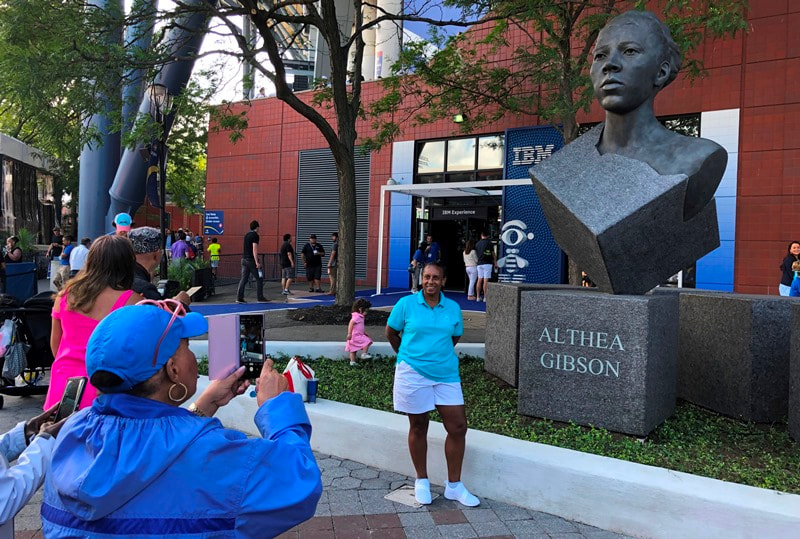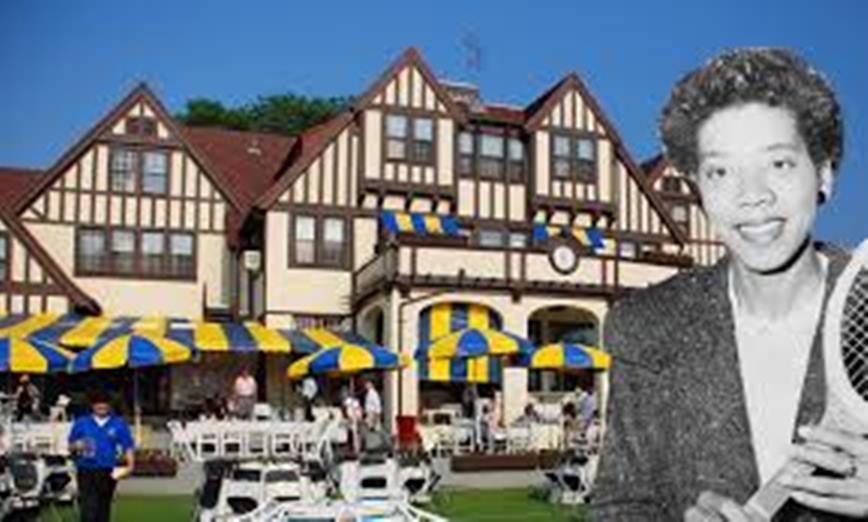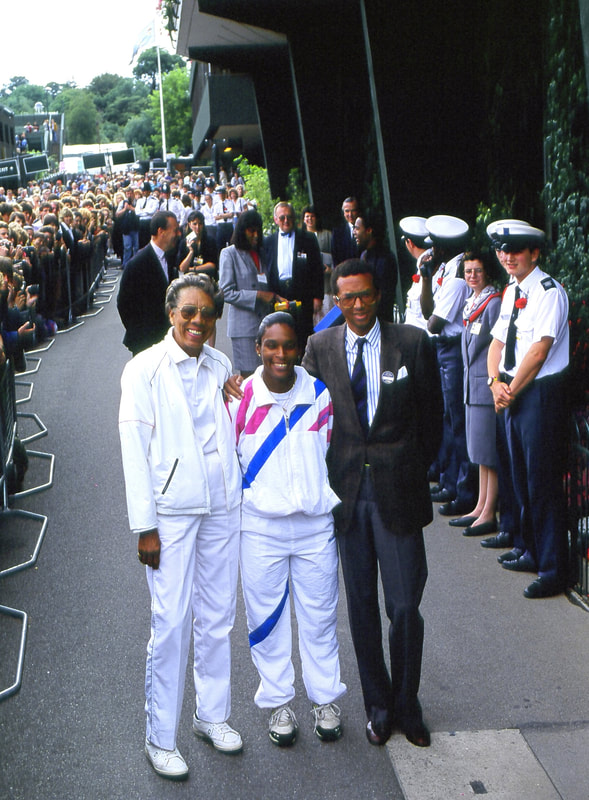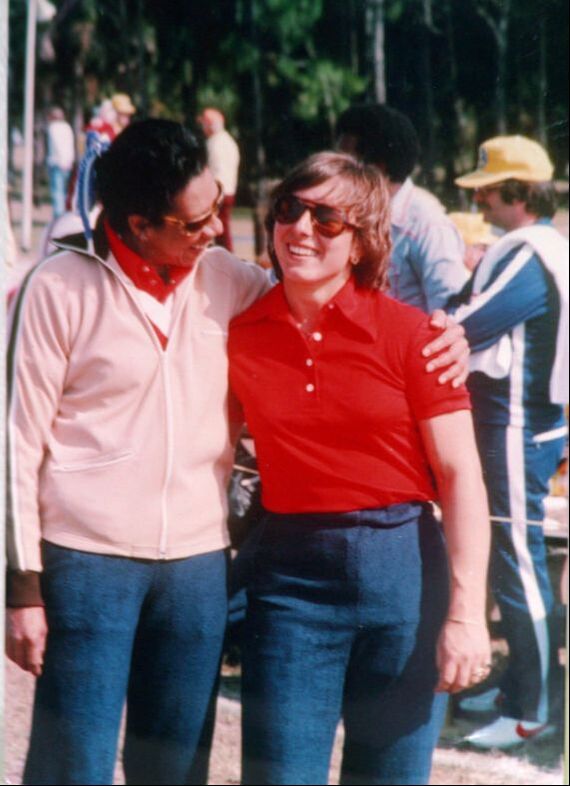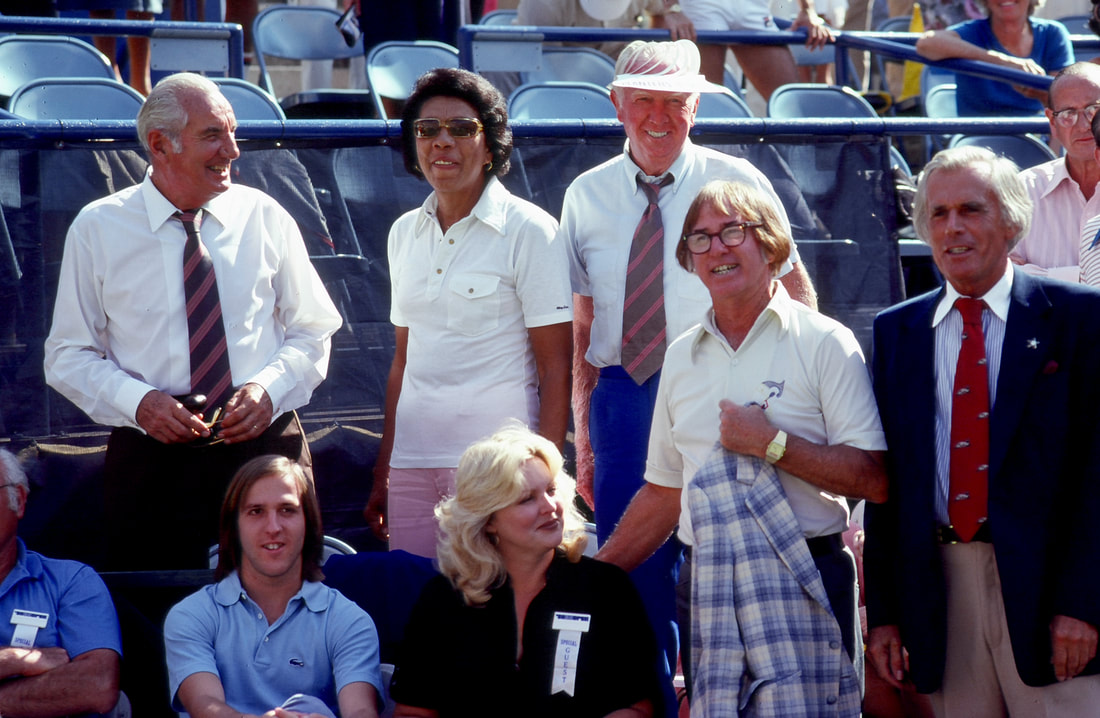|
The present is superimposed over the past. The U.S. Open began Monday by doing the right thing. A statue of Althea Gibson, pioneer and champion, was unveiled at the National Tennis Center, where she never played, at least competitively. Billie Jean King, Zina Garrison, Leslie Allen, Katrina Adams and Angela Buxton, Gibson's old doubles partner, all spoke of how Buxton was first. The statue, by Eric Goulder, is striking, as was Althea Gibson. Buxton, 85 and in a wheelchair, flew from London to recall how she bonded with Gibson on a pioneering mixed tennis trip to India and other countries. This belated honor to the first African-American player to play -- and win -- the "national" tournament is a prime example that this grand New York event is never only about these few weeks. The Open is about continuity. For all the crass, hard edges to the contemporary Open, there is still a faint whiff of gentility from the old Nationals in Forest Hills. Maybe it was the grass and the clubby atmosphere that mellowed people out. While tennis patrons this year are eager to catch a glimpse of Cori Gauff, age 15, to see if she just might be “the next” Naomi Osaka, or “the next” Sloane Stephens, the old champions still grace this event, in person or in perpetuity. I think of them every year as I visit the Open. I was reminded of Gibson this past week when Art Seitz, long-time tennis photographer from Florida, sent photos of Gibson that he had taken over the years. Seitz said he often met Gibson and found her to be friendly within the tennis circle, particularly to the young players, as tennis evolved to the age of King to Chris Evert and Martina Navratilova and Steffi Graf and Venus Williams and Serena Williams and so many others. 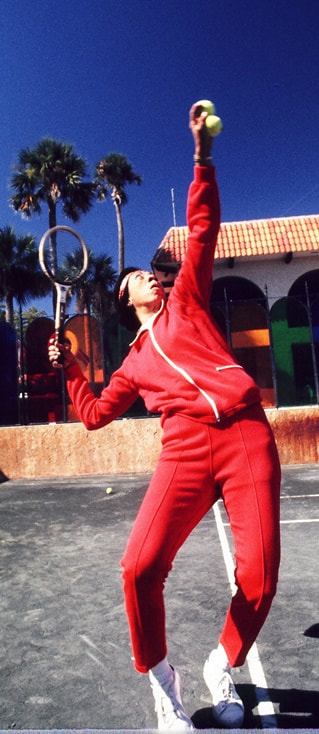 Power and form: Althea Gibson serving in Florida, after her career. Photo: Art Seitz Power and form: Althea Gibson serving in Florida, after her career. Photo: Art Seitz The old champions are part of the Open, and so is the old site -- Forest Hills from 1915 through 1977. As a Queens kid of 10 or 11, I started taking the IND subway to 71st St/Continental Ave., walking to the little oasis of the West Side Tennis Club. The place was so tiny, so intimate, that you could literally rub shoulders with players as they tried, politely of course, to reach their grass court for a match. As a Brooklyn Dodger/Jackie Robinson fan, I was eager for glimpses of Althea Gibson, the first African-American to play in the “national” tournament. She made her debut in 1950 and did not last long those first few years, but her athleticism and drive were obvious. She reached the finals in 1956 and won it in 1957 and 1958, after which she retired from tennis so she could make some money, as incongruous as that sounds today. Gibson played professional golf and I think I saw her play as part of the Harlem Globetrotters tour that came to New York every March. But money never reached Althea Gibson as tennis became big business, and old stars often returned to add their luster to the event. As a columnist who covered the Open and often Wimbledon, too, I was never aware of Gibson giving a press conference or showing up for big-bucks from sponsors and patrons. Except to get Gibson's autograph a time or two on the crowded walkways of the West Side Tennis Club, to my regret, I never met her. The best reflection of Gibson on Monday came from Buxton, a British player in the '40s and '50s, who had eagerly played doubles with Gibson, winning the 1956 Wimbledon doubles. Buxton said that as a Jew she was also somewhat of an outsider in those years. Buxton told the crowd at the unveiling how her family in London was host to Gibson when she played Wimbledon, and how Buxton's mother introduced the two players as "my daughters." In recent decades, Buxton would come around and chat with reporters, with obvious affection and a sense of mission about her friend Althea. In 2003, she told a reporter that Gibson was "tall and lanky and rather like Venus Williams.” Gibson was said to wish the Williams sisters, as great as they are, would rush the net more, but that is contemporary tennis. articIn later years, Gibson was ill, at home in New Jersey. She passed in 2003.
The city of Newark has put a statue of Gibson in a park, and now the USTA, through the of efforts of Katrina Adams, a former player and recently the president of the USTA. The talent and will of Althea Gibson are part of the Open, reflected by the current players, most of them tall and agile, like Gibson. We follow the new stars, and Althea Gibson’s image is with us forever -- on the lawns of the sedate little club a few miles away in another corner of Queens. * * * Obit, NYT, 2003: https://www.nytimes.com/2003/09/28/obituaries/althea-gibson-first-black-wimbledon-champion-dies-at-76.html?searchResultPosition=2 Current NYT article on the statue and how it got here: https://www.nytimes.com/2019/08/26/sports/tennis/althea-gibson-statue-us-open.html A Florida reporter's perspective of Gibson: https://www.nydailynews.com/os-xpm-2003-09-29-0309290251-story.html Gibson and "the Nationals" and Queens: https://www.6sqft.com/67-years-ago-in-queens-althea-gibson-became-the-first-african-american-on-a-u-s-tennis-tour/ The Facebook site for Art Seitz: https://www.facebook.com/ArtSeitz
Roy Edelsack
8/24/2019 04:51:04 pm
This will be my 61st consecutive year of attending at least one session at the US Championships/US Open (easy to do when you're brought
George Vecsey
8/25/2019 04:54:28 pm
Roy: thank you, Open used to be walkable for you. Good idea about the grandstand. GV
Cindy Shmerler
8/25/2019 08:24:41 am
What a lovely piece about Althea and her lasting legacy to this sport. While I never saw her play at Forest Hills, I was there at Wimbledon the day that she watched Zina Garrison contest the final against Martina Navratilova. I sought out Althea--I had met her before at the U.S. Open--and interviewed her briefly. She was charming, surprisingly effusive about Zina, Martina and the current state of tennis affairs, and happy to be in the limelight again, if only briefly. Her story, as often told by the terrific Angela Buxton, is lesson to us all that we must take care of our icons, while they're playing the sport and long after. Thank you, George, for reminding us of that. I look forward to the unveiling of her status tomorrow!
George Vecsey
8/25/2019 04:55:57 pm
Cindy any old star should have a friend like Angela Buxton, 85. I always enjoyed her visits to the media center. See you Monday. George
bruce
8/25/2019 11:34:00 am
george,
George Vecsey
8/25/2019 04:58:35 pm
Bruce: without going back over that Venus piece, I did not get the feeling that Ashe was slighted. He is....Arthur. I miss him, schmoozing in the press box in later years, wearing his gold-braided Naval cap, the smartest, gentlest soul, particularly for a champion. GV
bruce
8/25/2019 07:48:35 pm
George, Comments are closed.
|
Categories
All
|
